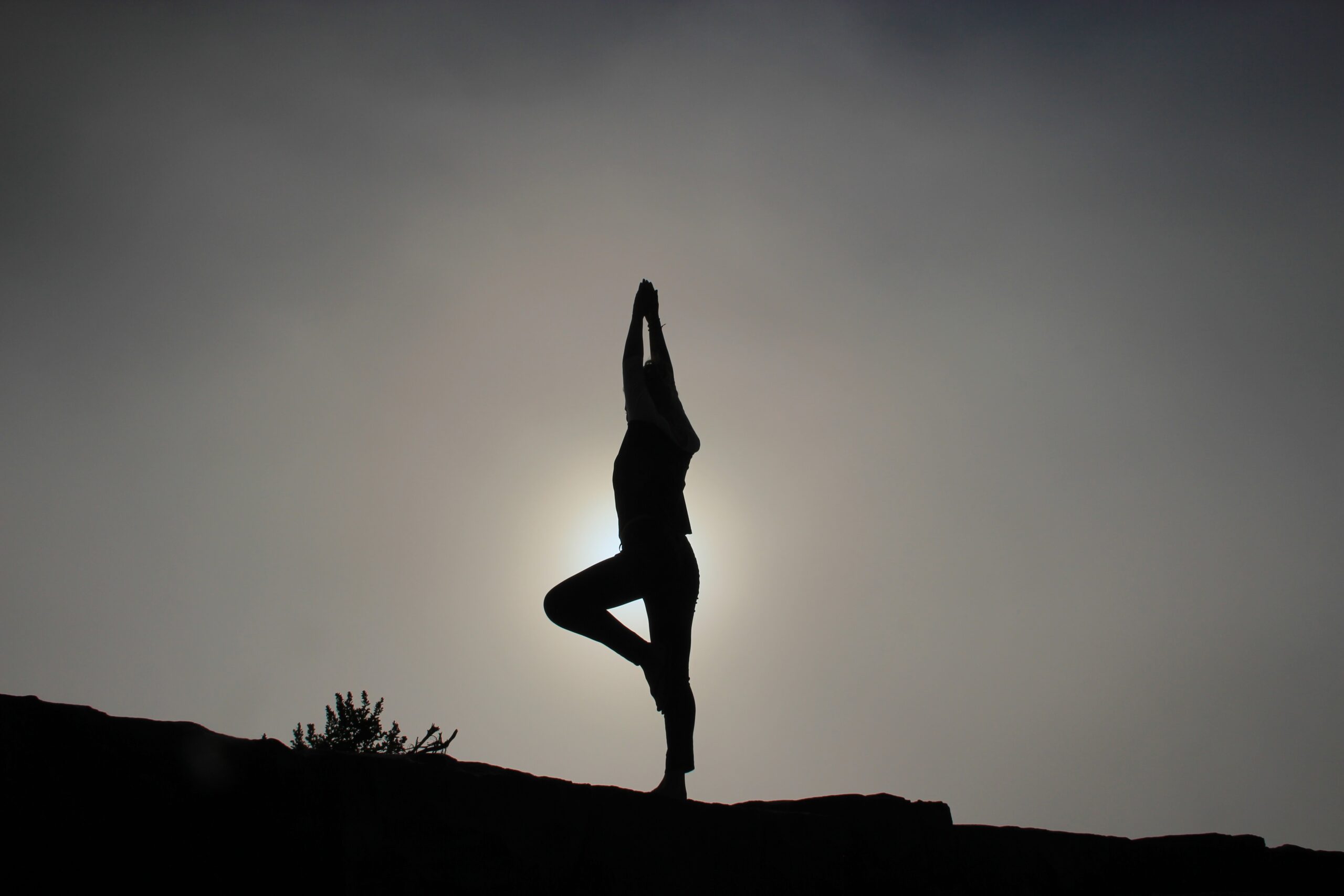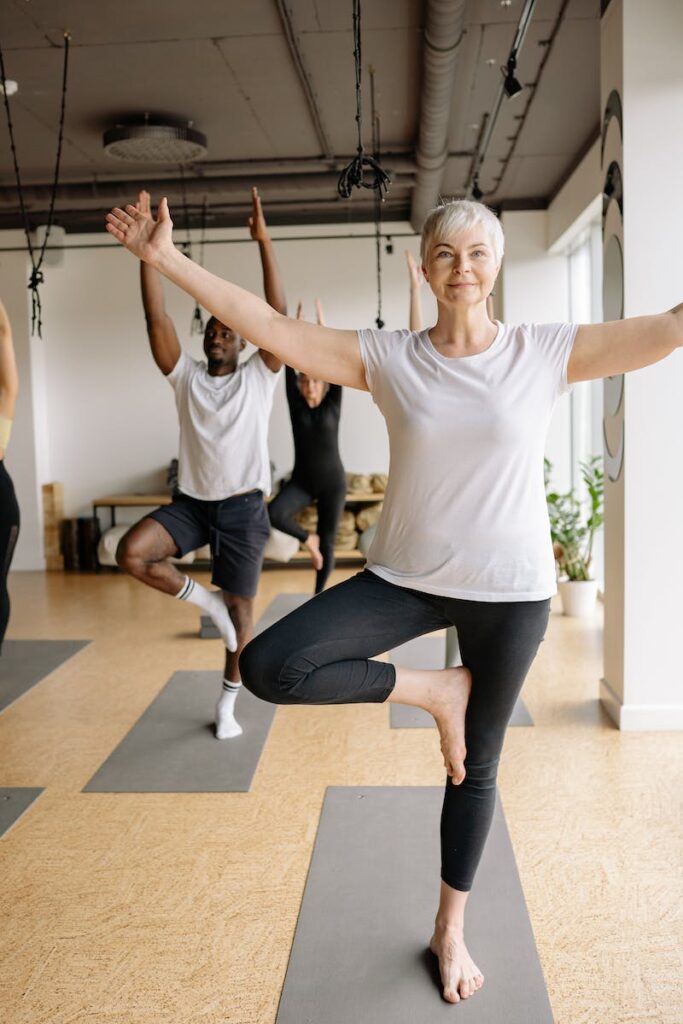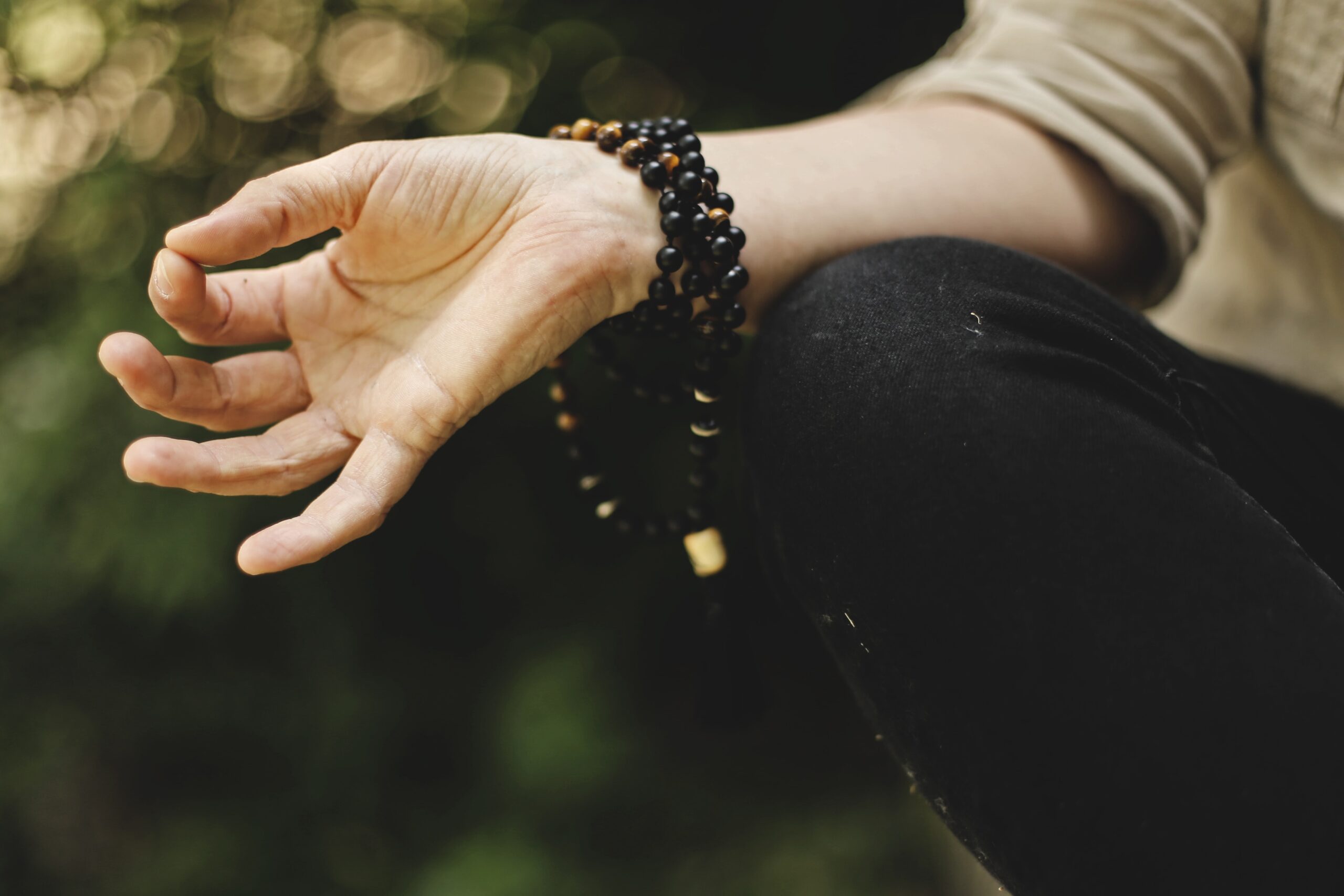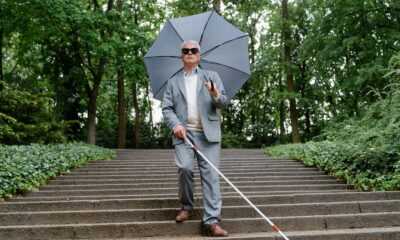Health
Yoga Poses for Seniors: A Guide to Gentle Exercise for Older Adults
Discover the benefits of yoga for seniors! Improve balance, mobility, and overall well-being with gentle yoga poses designed specifically for older adults.
If you’re a senior looking for a way to stay active and flexible, yoga may be the perfect exercise for you. In this article, we will explore the benefits of yoga for older adults and provide a guide to some gentle yoga poses specifically designed for seniors. These poses can help improve balance, mobility, and overall well-being, making it easier to maintain an active and healthy lifestyle as you age. So, whether you’re a seasoned yogi or new to the practice, grab your yoga mat and get ready to discover the wonderful world of yoga poses for seniors.
Benefits of Yoga for Seniors
Yoga is a gentle and low-impact form of exercise that can offer numerous benefits for seniors. Engaging in regular yoga practice can help to improve flexibility, strength, balance, and posture, which are all important aspects of maintaining overall health and well-being as we age.
One of the key benefits of yoga for seniors is improved flexibility. As we get older, our muscles and joints tend to become stiffer and less flexible. This can lead to a decrease in range of motion and an increased risk of injury. By practicing yoga regularly, you can help to counteract this natural decline in flexibility and keep your body moving smoothly and painlessly.
In addition to flexibility, yoga can also help to build strength in the muscles and bones. As we age, we naturally lose muscle mass, which can result in weakness and increased risk of falls. Yoga poses that require weight-bearing can help to strengthen the muscles and bones, reducing the risk of fractures and improving overall strength and stability.
Another important benefit of yoga for seniors is improved balance. Falls are a major concern for older adults, as they can result in serious injuries and long-term consequences. By practicing yoga poses that focus on balance, such as tree pose and warrior pose, you can strengthen the muscles that support balance and improve your overall stability.
Yoga is also a great way to promote good posture, which can become compromised as we age. Slouching and poor posture can lead to aches and pains, decreased mobility, and difficulty breathing. By practicing yoga poses that encourage proper alignment and spinal extension, such as mountain pose and gentle backbends, you can improve your posture and alleviate these issues.
In addition to the physical benefits, yoga can also have a positive impact on mental and emotional well-being. Yoga incorporates breathing techniques and mindfulness practices, which can help to reduce stress, improve mood, and enhance overall mental clarity. Taking time for yourself to focus on your breath and connect with your body can be a calming and rejuvenating experience, especially for seniors who may be dealing with additional stressors and life changes.
Overall, yoga offers a wide range of benefits for seniors, both physically and mentally. From improving flexibility and strength to promoting balance and good posture, regular yoga practice can help seniors maintain their overall health and well-being as they age.
Precautions and Safety Tips
While yoga can be an excellent form of exercise for seniors, it’s important to take certain precautions and practice safely. Here are some key considerations to keep in mind:
Consulting with a healthcare professional
Before starting a yoga practice, it’s always a good idea to consult with your healthcare professional, especially if you have any pre-existing health conditions or concerns. They can provide personalized guidance and advice based on your specific needs and limitations.
Using props and modifications
Using props, such as blocks, straps, and blankets, can be extremely helpful in modifying poses and making them more accessible for seniors. Props can provide support, stability, and make poses more comfortable. Don’t be afraid to use props to find what works best for your body.
Avoiding poses that strain the spine and joints
Some yoga poses, such as deep backbends or extreme twists, can put strain on the spine and joints, especially for seniors. It’s important to avoid any poses that cause pain or discomfort in these areas. Instead, focus on gentle and supported poses that promote stability and ease of movement.
Listening to your body’s limitations
One of the most important safety tips for practicing yoga as a senior is to listen to your body and respect your limitations. Each individual’s body is unique, and what works for one person may not work for another. Pay attention to any signs of pain, dizziness, or discomfort, and modify or skip poses as needed.
By taking these precautions and practicing safely, you can enjoy the many benefits of yoga while minimizing the risk of injury or strain.

Chair Yoga Poses
Chair yoga poses are a great option for seniors who may have difficulty getting down to the floor or have limited mobility. These poses can be done seated in a chair, providing support, stability, and accessibility. Here are some gentle chair yoga poses to try:
Seated Cat-Cow Pose
Begin seated near the front edge of the chair, with your feet hip-width apart and flat on the floor. Place your hands on your knees. As you inhale, arch your spine, lifting your chest and gaze towards the ceiling (cat pose). As you exhale, round your spine, tucking your chin towards your chest (cow pose). Repeat this flowing movement, syncing it with your breath, for several rounds.
Seated Forward Bend
Sit tall on the edge of the chair, with your feet hip-width apart and flat on the floor. Take a deep breath in and lengthen your spine. As you exhale, gently hinge forward from the hips, keeping your spine long and chest open. You can rest your hands on your thighs or grasp opposite elbows and gently sway side to side to release tension in the upper body. Take a few breaths here, feeling a gentle stretch in the hamstrings and back.
Neck Rolls
Sit tall in the chair, with your feet flat on the floor and hands resting on your thighs. Take a deep breath in and lengthen your spine. As you exhale, slowly lower your chin towards your chest. From here, slowly roll your head to the right, bringing your right ear towards your right shoulder. Continue rolling your head back, bringing your left ear towards your left shoulder, and then returning your chin to your chest. Repeat this gentle neck roll movement in the opposite direction.
Leg Extensions
Sit tall in the chair, with your feet flat on the floor. Extend one leg out in front of you, keeping your foot flexed. Engage your thigh muscles and hold for a few breaths. Lower your leg back down and repeat on the other side. This simple leg extension exercise can help to improve strength and flexibility in the legs.
These chair yoga poses can be practiced daily or as often as feels comfortable. Remember to move with awareness and adapt the poses to suit your body’s needs.
Standing Yoga Poses
Standing yoga poses can help to build strength, improve balance, and promote stability in seniors. While some of these poses may require the support of a chair or wall, they can still provide a gentle challenge and benefit to the body. Here are a few standing yoga poses for seniors to try:
Mountain Pose
Stand tall with your feet hip-width apart, toes pointing forward. Distribute your weight evenly between both feet and engage your leg muscles. Lengthen your spine, lifting through the crown of your head. Relax your shoulders and let your arms hang by your sides. Breathe deeply and hold this pose, feeling grounded and centered.
Tree Pose
Stand tall with your feet hip-width apart, toes pointing forward. Shift your weight onto your left foot and slightly bend your right knee. Place the sole of your right foot on your left calf or thigh, avoiding the knee joint. Find a point of focus in front of you and bring your hands to heart center, or reach your arms overhead. Hold this pose for several breaths, then repeat on the other side.
Warrior Pose
Stand tall with your feet hip-width apart, toes pointing forward. Take a step back with your left foot, turning it out at a slight angle. Bend your right knee, keeping it aligned with your ankle, and press into the outer edge of your left foot. Extend your arms out to the sides, parallel to the floor. Gaze over your front fingertips and hold this pose, feeling strong and empowered. Repeat on the other side.
Chair-Assisted Standing Pose
Stand tall with your feet hip-width apart, toes pointing forward. Place a chair in front of you and lightly hold onto the back of the chair for support. Take a step back with your left foot, turning it out at a slight angle. Bend your right knee, keeping it aligned with your ankle, and press into the outer edge of your left foot. Hold this pose, using the chair for balance if needed. Repeat on the other side.
These standing yoga poses can be practiced individually or as part of a sequence. Remember to maintain proper alignment and listen to your body’s cues, adjusting the poses as needed for your comfort and safety.

Balancing Yoga Poses
Balancing yoga poses can be challenging but offer incredible benefits for seniors in terms of building strength, enhancing stability, and improving focus. These poses can be modified and supported to make them more accessible. Here are a few balancing yoga poses for seniors:
Modified Tree Pose with Chair Support
Stand tall with your feet hip-width apart, toes pointing forward. Place a chair in front of you and lightly hold onto the back of the chair for support. Shift your weight onto your left foot and slightly bend your right knee. Place the sole of your right foot on your left calf or thigh, avoiding the knee joint, or keep your toes on the floor for increased stability. Find a point of focus and hold this pose, breathing deeply and feeling rooted and balanced. Repeat on the other side.
Warrior III Pose with Wall Support
Stand facing a wall, with your feet hip-width apart, toes pointing forward. Place your hands on the wall for support. Shift your weight onto your left foot and slightly bend your right knee. Extend your right leg back behind you, keeping it parallel to the floor, and press through your heel. Engage your core and find stability in your standing leg. Hold this pose, feeling the challenge and strengthening in your legs and core. Repeat on the other side.
Stand and Lift One Foot
Stand tall with your feet hip-width apart, toes pointing forward. Place your hands on your hips for support. Shift your weight onto your left foot and lift your right foot slightly off the floor, maintaining balance and stability. Hold this pose for a few breaths, then repeat on the other side.
Remember to start with modifications and support as needed, gradually building strength and stability over time. Balancing poses can take practice, so be patient with yourself and enjoy the process.
Hip-Opening Yoga Poses
Hip-opening yoga poses can help to improve flexibility, release tension, and increase mobility in the hips, which can be particularly beneficial for seniors. Here are a few gentle hip-opening poses to incorporate into your yoga practice:
Modified Pigeon Pose with Chair Support
Sit on the edge of a chair and place your right ankle on top of your left knee, keeping your right foot flexed. If this feels intense, you can place a folded blanket or cushion under your right knee for added support. Sit tall and gently lean forward, feeling a stretch in your right hip and glute. Take a few breaths here, then repeat on the other side.
Happy Baby Pose
Lie on your back on a yoga mat, bringing your knees into your chest. Separate your knees and bring them towards your armpits. Hold onto the outer edges of your feet or ankles, gently pulling your knees down towards the floor. If this is not accessible, you can use a strap or belt looped around your feet to help. Relax your shoulders and breathe deeply, feeling a gentle opening in your hips.
Bound Angle Pose
Sit on a yoga mat with your legs extended out in front of you. As you exhale, bend your knees and bring the soles of your feet together, allowing your knees to open out to the sides. If this feels intense, you can place yoga blocks or folded blankets under your thighs for support. Sit tall and relax your shoulders, breathing deeply and feeling a stretch in your inner thighs and hips.
These hip-opening poses can be practiced regularly to help improve flexibility and release tension in the hips. Remember to always listen to your body and work within your comfortable range of motion.

Chest-Opening Yoga Poses
Chest-opening yoga poses can help to improve posture, open up the chest and shoulders, and counteract the forward rounding that can occur with age. Here are a few gentle chest-opening poses for seniors:
Seated Heart Opener
Sit tall on a yoga mat or chair, with your feet flat on the floor and hands resting on your thighs. Take a deep breath in and lift your chest, rolling your shoulders back and down. As you exhale, gently arch your upper back, bringing your shoulder blades closer together. Lengthen your spine and breathe deeply, feeling a stretch in your chest and shoulders.
Seated Eagle Arms
Sit tall on a yoga mat or chair, with your feet flat on the floor and hands resting on your thighs. Inhale and extend your arms out to the sides. Exhale and cross your right arm under your left arm, bringing your palms to touch if possible. If your hands don’t touch, you can hold onto opposite shoulders. Lift your elbows slightly and breathe deeply, feeling a gentle stretch in your upper back and shoulders. Repeat on the other side.
Supported Fish Pose
Sit on a yoga mat or chair with a yoga block or bolster placed horizontally behind you. Slowly lower your upper back onto the block or bolster, feeling a gentle opening in your chest and front body. Rest your hands on your belly or extend them overhead for an added stretch. Breathe deeply and relax into the pose, allowing your chest and shoulders to open.
These chest-opening poses can be practiced regularly to promote good posture and release tension in the chest and shoulders. Remember to breathe deeply and relax into the poses, allowing the body to open naturally.
Gentle Backbends
Gentle backbends can help to counteract the effects of sitting, improve spinal flexibility, and promote good posture. Here are a few backbend poses that can be done with the support of props:
Supported Bridge Pose with Block
Lie on your back on a yoga mat, with your knees bent and feet flat on the floor. Place a yoga block or bolster under your sacrum (the bony part at the base of your spine). Relax your arms by your sides and breathe deeply, feeling a gentle stretch in your chest and front body. You can adjust the height of the block or bolster for your comfort.
Sphinx Pose
Lie on your belly on a yoga mat, with your legs extended behind you and the tops of your feet resting on the floor. Place your elbows directly under your shoulders, with your forearms flat on the mat and fingers spread wide. Press into your forearms and lift your chest, keeping your shoulders relaxed. Breathe deeply and hold this pose, feeling a gentle stretch in your back.
Supine Spinal Twist
Lie on your back on a yoga mat, with your knees bent and feet flat on the floor. Extend your arms out to the sides, in a T-shape. As you exhale, drop both knees to the right, keeping your shoulders grounded. Turn your head to the left and hold this pose, feeling a gentle twist in your spine. Breathe deeply and repeat on the other side.
These gentle backbend poses can be incorporated into your yoga practice to improve spinal flexibility and promote good posture. Remember to listen to your body and work within your comfortable range of motion.
Seated Twists
Seated twists can help to improve spinal mobility, release tension in the back and hips, and promote digestion. Here are a few seated twist poses for seniors:
Half Lord of the Fishes Pose
Sit tall on a yoga mat or chair, with your legs extended out in front of you. Bend your right knee and place your right foot on the outside of your left thigh, near your knee. Place your left hand on your right knee, and as you exhale, gently twist to the right, looking over your right shoulder. Keep your spine long and breathe deeply, feeling a gentle twist in your spine. Repeat on the other side.
Seated Spinal Twist
Sit tall on a yoga mat or chair, with your legs extended out in front of you. Bend your right knee and place your right foot on the outside of your left thigh, near your knee. Place your left hand on your right knee, and as you exhale, gently twist to the right, looking over your right shoulder. Keep your spine long and breathe deeply, feeling a gentle twist in your spine. Repeat on the other side.
These seated twist poses can be practiced regularly to improve spinal mobility and release tension in the back and hips. Remember to breathe deeply and work within your comfortable range of motion.
Relaxation and Meditation
Relaxation and meditation are important components of a yoga practice for seniors, as they can help to reduce stress, promote relaxation, and enhance overall well-being. Here are a few relaxation and meditation techniques to incorporate into your routine:
Corpse Pose
Lie on your back on a yoga mat, with your legs extended and your arms resting by your sides, palms facing up. Close your eyes and take slow, deep breaths, allowing your body to relax completely. Scan your body from head to toe, consciously releasing any tension or tightness. Stay in this pose for several minutes, allowing your body and mind to unwind.
Guided Relaxation Meditation
Find a comfortable seated position, either on a yoga mat or in a chair. Close your eyes and begin to focus on your breath, taking slow and deep breaths. As you inhale, imagine breathing in relaxation and peace. As you exhale, imagine releasing any tension or stress. If it helps, you can listen to a guided meditation or visualization, allowing your mind to follow along and relax.
Deep Breathing
Sit tall on a yoga mat or chair, with your feet flat on the floor and hands resting on your belly. Close your eyes and begin to focus on your breath. Take slow, deep breaths, allowing your belly to expand as you inhale and contract as you exhale. Continue this deep breathing pattern for several minutes, feeling a sense of calm and grounding.
Incorporating relaxation and meditation into your yoga practice can help to create a peaceful and rejuvenating experience. Taking time to connect with your breath and quiet your mind can be especially beneficial for seniors, who may be dealing with additional stressors and life changes.
In conclusion, yoga offers a wide range of benefits for seniors, including improved flexibility, strength, balance, posture, and overall well-being. By practicing yoga regularly and incorporating a variety of poses and techniques, seniors can stay active, maintain their health, and enjoy the numerous physical and mental benefits that yoga has to offer. It’s important to remember that each individual’s body is unique, and it’s necessary to listen to your body’s limitations, practice safely, and consult with a healthcare professional if needed. With proper precautions and modifications, yoga can be a gentle and accessible form of exercise for seniors at any fitness level. So roll out your yoga mat or find a comfortable chair, and embark on a journey to better health and vitality through the practice of yoga. Namaste.
















